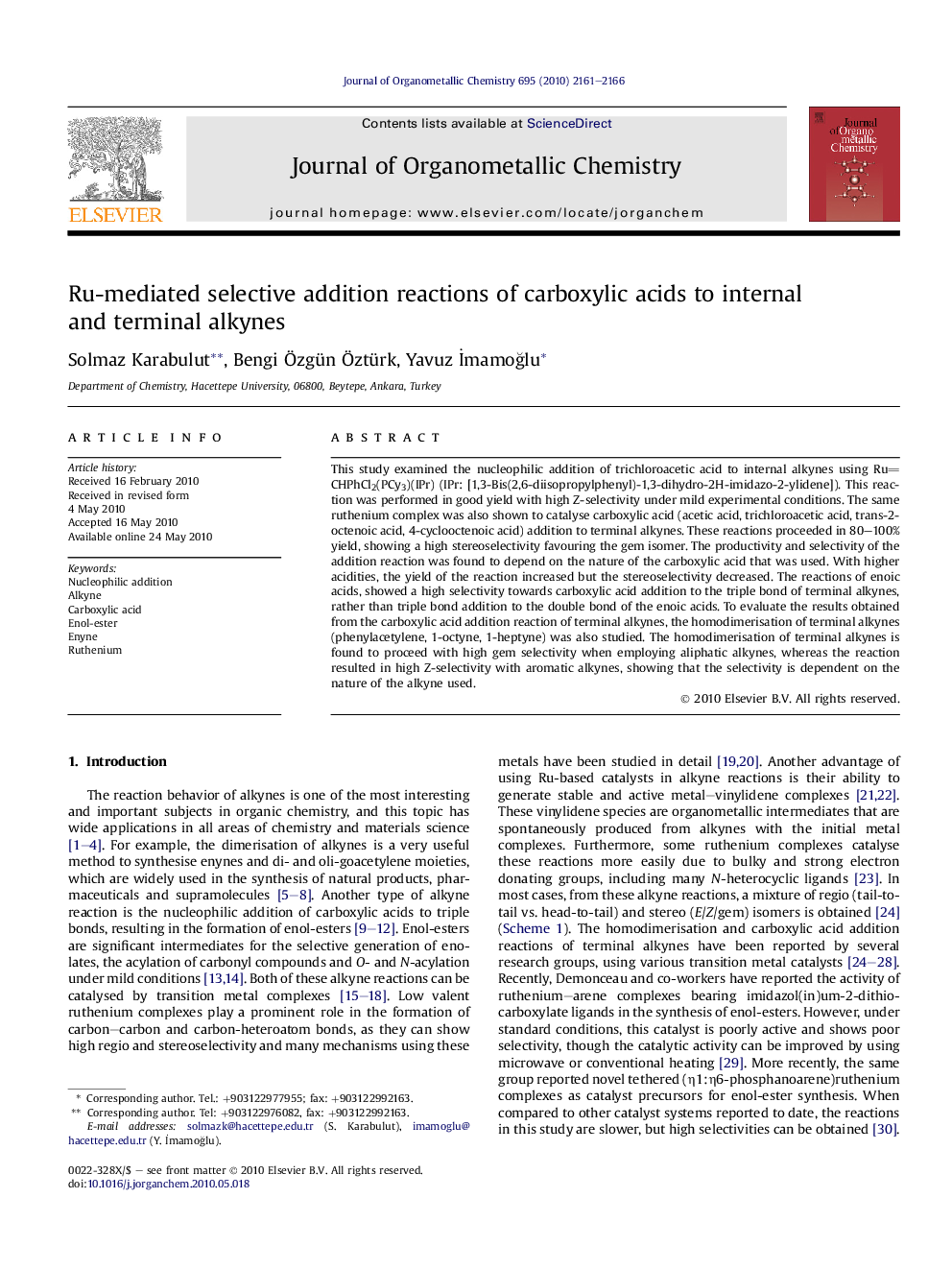| Article ID | Journal | Published Year | Pages | File Type |
|---|---|---|---|---|
| 1324051 | Journal of Organometallic Chemistry | 2010 | 6 Pages |
This study examined the nucleophilic addition of trichloroacetic acid to internal alkynes using RuCHPhCl2(PCy3)(IPr) (IPr: [1,3-Bis(2,6-diisopropylphenyl)-1,3-dihydro-2H-imidazo-2-ylidene]). This reaction was performed in good yield with high Z-selectivity under mild experimental conditions. The same ruthenium complex was also shown to catalyse carboxylic acid (acetic acid, trichloroacetic acid, trans-2-octenoic acid, 4-cyclooctenoic acid) addition to terminal alkynes. These reactions proceeded in 80–100% yield, showing a high stereoselectivity favouring the gem isomer. The productivity and selectivity of the addition reaction was found to depend on the nature of the carboxylic acid that was used. With higher acidities, the yield of the reaction increased but the stereoselectivity decreased. The reactions of enoic acids, showed a high selectivity towards carboxylic acid addition to the triple bond of terminal alkynes, rather than triple bond addition to the double bond of the enoic acids. To evaluate the results obtained from the carboxylic acid addition reaction of terminal alkynes, the homodimerisation of terminal alkynes (phenylacetylene, 1-octyne, 1-heptyne) was also studied. The homodimerisation of terminal alkynes is found to proceed with high gem selectivity when employing aliphatic alkynes, whereas the reaction resulted in high Z-selectivity with aromatic alkynes, showing that the selectivity is dependent on the nature of the alkyne used.
Graphical abstractThis study examined the nucleophilic addition of trichloroacetic acid to internal alkynes using RuCHPhCl2(PCy3)(IPr) (IPr: [1,3-bis(2,6-diisopropylphenyl)-1,3-dihydro-2H-imidazo-2-ylidene]). This reaction was performed in good yield with high Z-selectivity under mild experimental conditions. The same ruthenium complex was also shown to catalyse carboxylic acid (acetic acid, trichloroacetic acid, trans-2-octenoic acid, 4-cyclooctenoic acid) addition to terminal alkynes. These reactions proceeded in 80–100% yield, showing a high stereoselectivity favouring the gem isomer. The productivity and selectivity of the addition reaction was found to depend on the nature of the carboxylic acid that was used.Figure optionsDownload full-size imageDownload as PowerPoint slide
